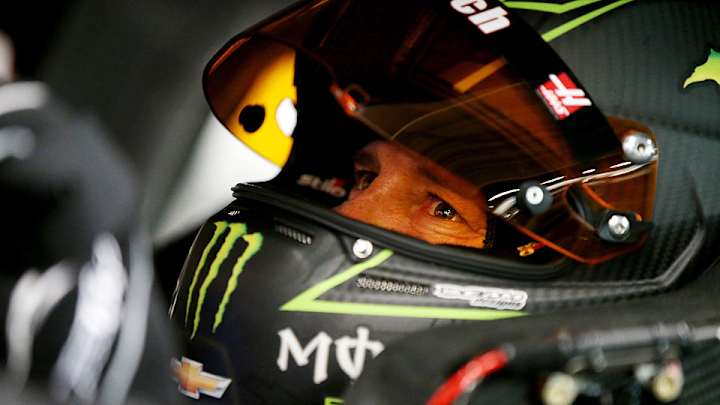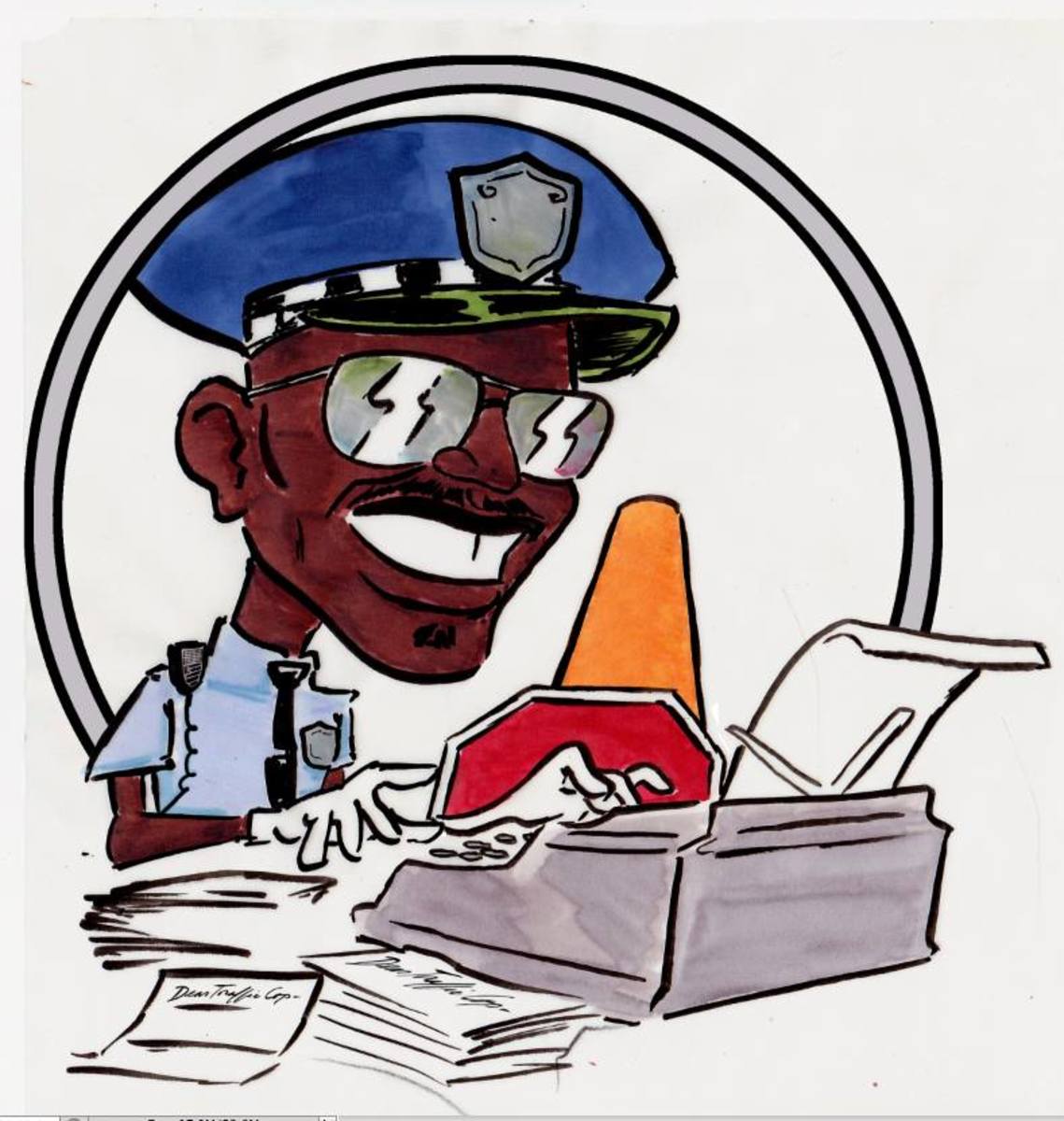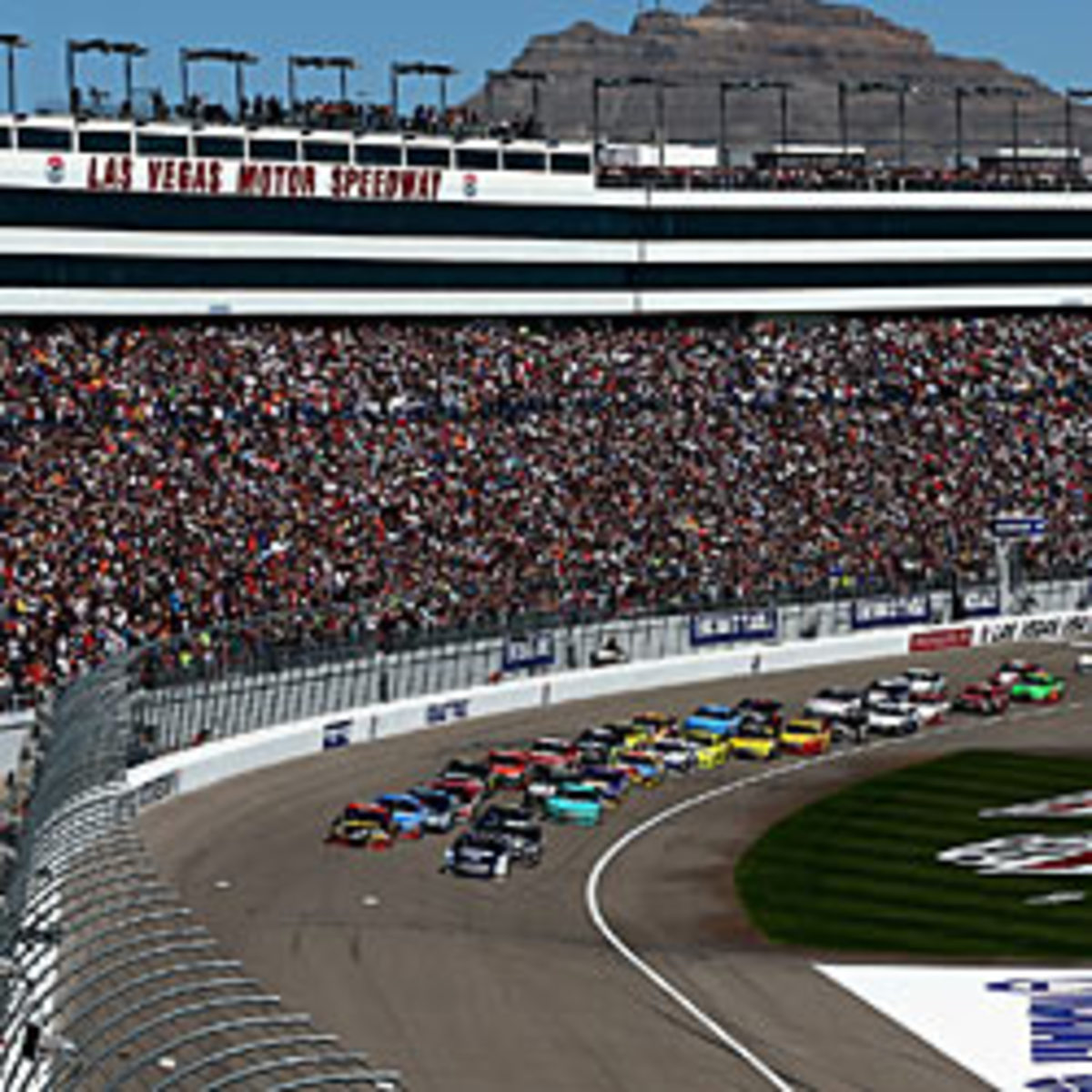Time was on Kurt Busch's side; new Earnhardt movie; more hot topics


sitrafficcop@gmail.com
The names of the readers this week are (like in last week's edition) fictitious, but the questions are serious and rated on a scale of most pressing (red light) to least (green). Your future submissions may be edited for clarity or brevity or simply because we've got nothing better to do.
The Delaware Department of Justice announced on Thursday that it will not be pursuing charges against Kurt Busch after reviewing the complaint made by his ex-girlfriend Patricia Driscoll who alleged that she was the victim of domestic violence at his motor home in Dover, Del. on the night of Sept. 26, 2014. Is this surprising?

—Concerned Citizen
Not really, no. A couple of weeks ago, a Delaware Family Court judge said Busch more than likely committed an act of violence against Driscoll and added that the Stewat-Haas pilot was predisposed to doing so again. But on Thursday the DDoJ said, "After a thorough consideration of all of the available information about the case, it is determined that the admissible evidence and available witnesses would likely be insufficient to meet the burden of establishing beyond a reasonable doubt that Mr. Busch committed a crime during the September 26th incident.”
The second statement would seem to contradict the first. It doesn't.
A 2009 study in Criminal Justice Review titled “Prosecution and Conviction Rates for Intimate Partner Violence” shows how the two polar ideas can coexist. It reviewed some four decades’ worth of law enforcement data from 170 mostly urban areas in 25 U.S. states as well as jurisdictions in Australia, Canada, Switzerland and the U.K. It found that, in those territories, only one-third of reported offenses result in prosecution. Isolate the U.S. from the field and the rate drops to just over one-quarter.
Why? One contributing factor the study cites is the American Bar Association’s stated preference to avoid using arrest and prosecution in domestic violence cases. Another contributing factor the study cites, in a synthesis of 60-plus years of scholarly work, is that the “standards set by prosecutors for accepting a case for trial are so restrictive that wife-abuse cases rarely qualify”—a quote that comes from a 1976 paper it singled out. That is essentially the reason the DDoJ gave for not charging Busch. It is also the reason why there is a pathway in the civil court system for victims of domestic violence to seek a measure of protection.
Kurt Busch's accuser Patricia Driscoll says she's paying heavy price in case
The fact that Driscoll pursued that course, and successfully obtained a protection abuse order from a Delaware Family Court judge should have helped the DDoJ’s case, along with the photographs and witnesses she furnished for Dover police detective James Wood and court commissioner David W. Jones. If anything could have undermined her criminal case, it was time. Not the six weeks that Driscoll took before filing her complaint—time she spent, not unlike most abuse victims, trying to avoid a protracted court ordeal. We mean the 13 days that followed her filing. That’s how long it took Dover police to investigate the case before forwarding their findings to the attorney general’s office.
A 2012 article in the journal Criminology & Criminal Justice titled “Police controlled antecedents which significantly elevate prosecution and conviction rates in domestic violence cases” shows such delays to be common. It says, “If it takes more than 10 days for the police officer’s report to get to the prosecutor, the likelihood of prosecution and conviction drops by 25 percent. If it takes more than 30 days, the likelihood decreases by 50 percent.”
Back in November, Dover police acknowledged to SI.com that interviewing witnesses in this case had proved to be challenging and time-consuming because they didn’t live in the area and traveled frequently as part of NASCAR. That includes Busch, who went almost two weeks before submitting to an official police interview.
All that said, the least surprising element of this recent development is that DDoJ's decision does not change Busch's status with NASCAR. (In Friday radio appearance, NASCAR spokesman David Higdon reiterated the league's revised position on domestic violence, which now holds members to a much higher standard than in the past.) Busch remains suspended indefinitely and has applied for reinstatement in accordance with NASCAR guidelines. There remains no clear timetable for his return.
I see that Spike TV has a new movie out about Dale Earnhardt Sr., titled “I Am Dale Earnhardt.” By my reckoning, it’s the first Intimidator biopic to draw mainstream hype since the ESPN’s “3: The Dale Earnhardt Story” that came out over 14 years ago. How do the two films compare?

—A. Cable-Subscriber
Neither film strays far from the original text, which holds Earnhardt as the one true racing god before whom no other racing gods should be placed. But that’s not to say the more recent production, a documentary made by NASCAR, is a carbon copy of the work of fiction put forth by ESPN. For proof, check out this tale of the tape:
. Logline
I Am Dale Earnhardt
Dale Earnhardt earned the respect of his peers, a nationwide following and a great many partners on Madison Ave. by winning on his terms; that these terms often included spinning out his rivals on purpose makes him a badass. (Remember: this film is meant for Spike viewers.)
.
The Dale Earnhardt Story
A Kannapolis, N.C. man overomes harsh poverty and his overbearing father in a quest to become NASCAR best ever driver; isn't truly recognized as such until a Feb. 2001 race at Daytona.
. Animating Principles
I Am Dale Earnhardt
Archival footage and talking heads rehashing things that actually happened.
.
The Dale Earnhardt Story
Archival footage and a B-list cast, led by Barry Pepper (who played Earnhardt), recreating things that actually happened.
. What You'll See Coming
I Am Dale Earnhardt
Earnhardt's friendship with Neil Bonnett.
.
The Dale Earnhardt Story
The screwdriver story.
. What You Won't See Coming
I Am Dale Earnhardt
The death threat.
.
The Dale Earnhardt Story
The love scene.
. Most Welcome Appearance
I Am Dale Earnhardt
F1 superstar-in-waiting Daniel Ricciardo.
.
The Dale Earnhardt Story
Cutaways to classic Earnhardt races
. Most Random Appearance
I Am Dale Earnhardt
The Voice winner Cassadee Pope
.
The Dale Earnhardt Story
Academy Award winner J.K. Simmons as Earnhardt paterfamilias, Ralph.
. Biggest Omission
I Am Dale Earnhardt
Earnhardt's widow, Teresa
.
The Dale Earnhardt Story
Earnhardt's longtime crew chief, Kirk Shelmerdine
. Where the Liberties Are Taken
I Am Dale Earnhardt
In Earnhardt's relationship with NASCAR fans, who didn't universally adore him until much later in his career.
.
The Dale Earnhardt Story
In Earnhardt's relationship with Darrell Waltrip, which wasn't that bitter.
. Lines That Stick
I Am Dale Earnhardt
"I got into racing because there's less competition than in pipe fittin. There's a whole bunch of fellers that wanted my job as a pipe fitter, but no one wants to drive that piece of CRAP I've been racin!" — Neil Bonnett, upon first meeting Earnhardt.
.
The Dale Earnhardt Story
"You got it, Mikey! … This is great. … I hope Dale is Ok. I guess he's alright, isn't he..?" — Darrell Waltrip, after his brother Michael wins the Daytona 500 as Earnhardt wrecks.
. Cop's Take
I Am Dale Earnhardt
See it. If you don't have Spike TV, you can screen it on their web site.
.
The Dale Earnhardt Story
See it, for Pepper's Dale and to marvel at the kind of work Simmons used to do before Hollywood figured out he was a truly great actor.
_____________________________________
Recently, NASCAR passed a rule amendment reducing the number of team members on pit road after races. The rule is clearly intended to diminish the potential for another pit box-clearing brawl like the one we saw after the Chase race in Ft. Worth last November. Is this a good idea?

—Backseat Brawler
It’s a good idea. If too many of those kinds of brawls occur, NASCAR starts to look a bit too much like the WWE. But it’s not the best idea. Kevin Harvick submitted that one before last year’s Chase race at Phoenix, which he went on to dominate on the way to winning the whole burrito. His two cents:
“NASCAR actually asked how they could handle things better in that situation [post-race],” he said. “It is pretty simple. You park all 43 cars or however many cars that are running. You have a contained area, wherever you want to put it. (…) If a crewmember goes in, then your car is disqualified. (…) They don’t want to see something like that, which could have an outcome that nobody wants.”
Advisories
• Leigh Montville’s seminal piece on the relationship between Dale and Dale Jr. makes nice companion reading to any Earnhardt movie marathon.

- Alexander Goot wrote a thoughtful piece for The Classical on Danica Patrick’s on-track legitimacy.
- Here's Matt Crossman's fun piece for Viceabout pace car driving.
Enjoy Sunday’s race, everybody!
KOBALT 400

1.5-mile oval)
Time and TV:3:30 p.m. EST; FOX
Most recent winner:Brad Keselowski (3/9/14)
Watch for:Jimmie Johnson. The four-time victor will be trying to string together a two-race win streak and overtake Daytona 500 winner Joey Logano in the point standings. Also, Brian Vickers makes his season debut after having heart surgery.
Of note:If the Chase started tomorrow—a funny thing to say two races into the season, but bear with us—Martin Truex, Jr. (fifth), Casey Mears (sixth), David Gilliland (11th), Sam Hornish, Jr. (12th), David Ragan (15th) and Danica Patrick (16th) would be in on points. They are six drivers we’re not accustomed to observing this high in the standings. It will be interesting to see whether this group can not only improve on their position, but also stay together.
–Andrew Lawrence; Traffic Cop illustration by Noah Ginex
